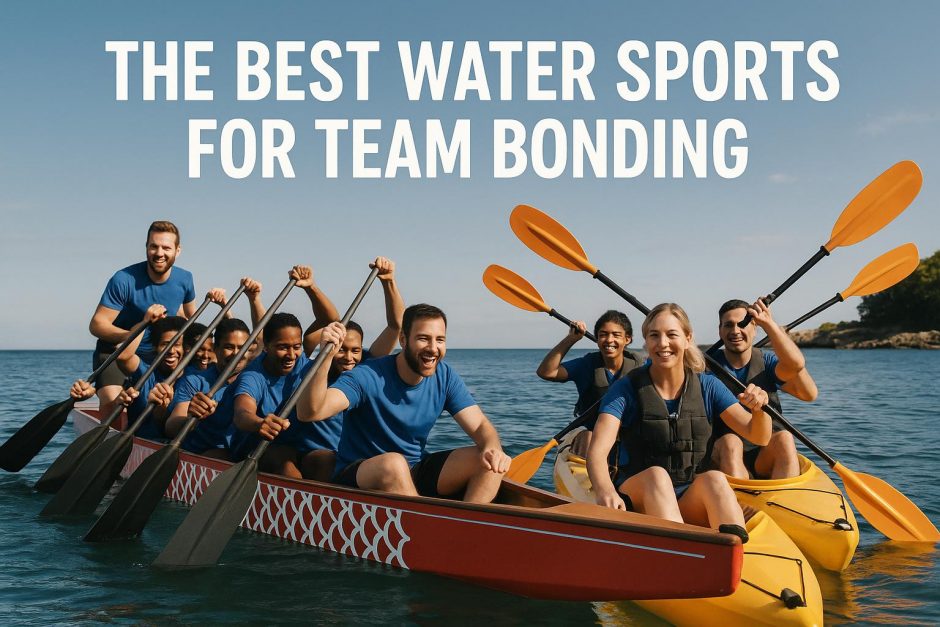Introduction to Water Sports for Team Bonding
Water sports offer a unique combination of physical activity, excitement, and a natural setting, making them an excellent choice for enhancing team bonding. The need for synchronization, coordination, and effective communication in these activities plays a pivotal role in developing stronger team dynamics. Throughout this text, we will delve into the specifics of several water sports that are particularly beneficial for promoting team cohesion and collaboration.
Rafting
Rafting is an exhilarating water sport that involves teams navigating turbulent river waters in an inflatable raft. The activity demands that team members work closely together to chart a course through unpredictable water conditions, which include fast-moving rapids and various natural obstacles. This requirement for unity and collaboration can significantly strengthen team relationships. Rafting challenges participants to communicate effectively, build trust, and develop a shared strategy to tackle the diverse challenges they encounter. In doing so, it cultivates a team spirit that is often hard to achieve in a classroom or traditional office environment. The shared experiences of overcoming obstacles serve as a powerful bonding agent, bringing team members closer together.
Dragon Boat Racing
Dragon boat racing is a culturally rich activity that originated in China and offers substantial team-building benefits, especially for larger groups. Each dragon boat typically accommodates a crew of 20 paddlers along with a drummer and a steerperson, making it ideal for extensive team participation. The sport requires all paddlers to synchronize their strokes precisely to the rhythm set by the drum, emphasizing the importance of teamwork and coordination. Synchronization in dragon boat racing symbolizes unity and exemplifies the collective effort needed to achieve a common goal. Participating in such an event not only enhances team cooperation but also encourages individuals to function as a cohesive unit, which is invaluable in any team setting. The shared challenge of coordinating as a group under competitive circumstances translates well into improved teamwork back in the office.
Sailing
Sailing is another engaging water sport that encapsulates the essence of teamwork. When sailing, each team member is assigned a specific task, such as adjusting sails or steering, making trust and communication essential components of the activity. The necessity for constant interaction to respond to changing wind patterns and water conditions makes sailing a practical exercise in building team synergy. It is also an excellent way to uncover insights into team dynamics and individual’s problem-solving skills, particularly in a high-pressure setting where quick thinking is required. The lessons learned from successfully sailing as a team, like adapting to changes and leveraging everyone’s skills, can significantly enhance workplace efficiency and collaboration.
Canoeing
Canoeing is a more serene water sport compared to the thrills of rafting but is equally effective for team-building. Sharing a canoe requires team members to work closely in pairs or small groups, emphasizing balance, direction, and steady communication. Maintaining the canoe’s course and stability challenges the team to develop an innate understanding and anticipate each other’s movements and actions. This process naturally strengthens the bond between team members, encouraging them to become more cohesive in their collaborative efforts. Canoeing also provides a platform for individuals to discover their communication styles and how best to utilize them in a supportive team environment. The calm waters and steady pace allow for reflection and constructive discussions about teamwork that can be invaluable later.
Benefits of Water Sports for Team Building
Engaging in water sports for team-building purposes comes with a range of benefits. These activities are physically invigorating and serve as excellent icebreakers, promoting open lines of communication among participants. They encourage team members to explore and recognize their strengths and contributions within a group setting, fostering an environment of trust and respect. The shared experiences, from overcoming challenges to celebrating achievements, lay the foundation for improved cooperation and camaraderie. This strengthened relationship often carries over into the workplace, leading to enhanced collaborative efforts and more effective communication in professional contexts.
Safety Considerations
An essential aspect of participating in water sports is ensuring safety at all times. Safety precautions must take precedence to protect all participants. This involves equipping everyone with necessary gear such as life jackets and ensuring they are properly briefed on safety practices before any activity. It is crucial to have a trained guide or professional oversee the activities to manage any potential risks effectively. By instilling a culture of safety, teams can enjoy these activities while minimizing hazards, ensuring that the focus remains on team-building and collaboration.
Conclusion
Water sports present a valuable opportunity for teams to engage in activities that promote leisurely enjoyment while strengthening team bonds. Participating in these activities can lead to enhanced communication skills, robust team connections, and a rejuvenated sense of teamwork. Teams that invest time and effort in such experiences often see long-term benefits in how they interact and work together professionally. The integration of these shared adventures into a team’s regular activities can result in lasting improvements in workplace dynamics, contributing to a more harmonious and productive environment.

